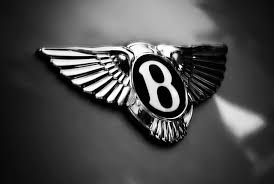By Richard Vaughan
There are several brands of super-luxury cars on the market that draw on inspiration from their  historic past, but some of them are just that – brands. They may represent some of the ideas and values of their founders and wear certain historic badges, but they have no real connection to the historic cars that bore the same name. For these carmakers, it’s just a marketing game.Nothing could be farther from that situation than Bentley Motors, which marks its 100th anniversary this year. Bentley Motors Ltd. has continually produced cars since it was founded in 1919. There is a level of authenticity in its cars that no amount of branding and marketing can reproduce. That kind of authenticity is evident in spades in the company’s top-of-the-line car, the 2019 Mulsanne, which still uses an evolution 6 ¾ L V8 engine which first went into production in 1959. There are very few objects that today’s consumer can buy with that kind of lineage.
historic past, but some of them are just that – brands. They may represent some of the ideas and values of their founders and wear certain historic badges, but they have no real connection to the historic cars that bore the same name. For these carmakers, it’s just a marketing game.Nothing could be farther from that situation than Bentley Motors, which marks its 100th anniversary this year. Bentley Motors Ltd. has continually produced cars since it was founded in 1919. There is a level of authenticity in its cars that no amount of branding and marketing can reproduce. That kind of authenticity is evident in spades in the company’s top-of-the-line car, the 2019 Mulsanne, which still uses an evolution 6 ¾ L V8 engine which first went into production in 1959. There are very few objects that today’s consumer can buy with that kind of lineage.
The company was founded as Bentley Motors Limited by Walter Owen Bentley in 1919 in Cricklewood, North London. His goal was, “to build a fast car, a good car, the best in its class”. Within a few years Bentley became the favored car of England’s sporty, yet aristocratic gentlemen because of the fame the company garnered by winning the 24 Hours of Le Mans in 1924, 1927, 1928, 1929 and 1930. Prominent models from that historic sports-racing period were the 3 Litre, 4½ Litre, Speed Six, and 8 Litre. These were not luxury cars by today’s standards. For the buyers of Bentley in that era, luxury was not about having more gadgets and frivolous options. It was about capability - more speed, better braking, outstanding handling and, of course, durability. They were indeed fast, comfortable and well-made cars.
Unfortunately for W.O Bentley, success in winning the hearts and minds of English gentlemen through success at the track came at a high cost and the company did not survive the Depression. In 1931, Bentley was purchased by Rolls-Royce Motor Cars Ltd, makers of “The Best Car in the World.” For another two and a half decades, under Rolls-Royce, Bentley continued to be something extremely special. The 1952-1955 Bentley R-Type Continental is widely considered to be one of the most beautiful and desirable cars of all time, with values well into the seven-figure range.
For about 30 years after the sunset of the R-Type model, the brand was somewhat starved of
investment by Rolls-Royce, which meant that Bentleys were simply badge-engineered Rolls-Royces. There were fabulous coachbuilt exceptions by H.J. Mulliner , Freestone & Webb, Hooper and others, but generally the Bentley S-Series (1955-1964), the T-Series (1965-1980) and the Mulsanne (1981-1986) were simply Rolls-Royces with a simpler grille. In fact, Rolls-Royce advertising from that era often stated that a Bentley grille was available for customers who felt diffident about being seen in a Rolls-Royce.
Things changed in the 1980s when the company awakened to the untapped potential that a powerful, fast and well-made gentleman’s express could bring to the bottom line. The Bentley Mulsanne Turbo was born. It was the same as the normal Mulsanne - which is to say exquisitely crafted - but it had something new – a Garrett T3 Turbocharger. Shortly thereafter, the company addressed the suspension and rechristened the model the Turbo R. The R stood for road holding. For the first time in decades, Bentley was producing the most desirable sedan in the world.
Some of the most desirable collector cars from the 1990s are Bentleys, including the rare Continental S convertible, Azure and the Continental T. The last motorcar designed and developed by an independent and British-owned Bentley Motors was the Arnage, which debuted in 1998 and ran through 2009, with several variants.
Shortly after the debut of the Arnage, Rolls-Royce was sold by its owner, industrial giant Vickers. In one of the most amazing corporate takeovers of all time, Volkswagen thought it had purchased Rolls-Royce Motor Cars Ltd. for $750m but shortly thereafter got a big surprise. They had only purchased the outdated factory and the Bentley brand. The name Rolls-Royce – the real asset in question - was owned by Rolls-Royce PLC, the aircraft engine maker, not by Vickers. It was only licensed to Vickers. BMW became the licensee of the Rolls-Royce brand and brand assets for only $46m.
Volkswagen Group was left with no choice but to spend billions resurrecting the Bentley brand through investments in the Crewe facility and in new models. In the end, the enthusiast world was better off because for the first time in decades, we had a Bentley that was not based on a Rolls-Royce model. That car was the Continental GT, which made its North American debut in 2004. Since then, the company has developed a string of successful models and the cars are more successful than ever.












